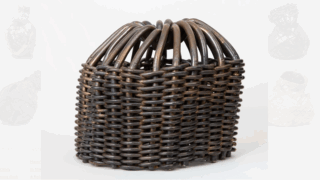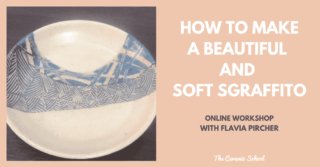If you’re a potter or someone who loves collecting pottery, you know how disappointing it can be to receive a package with a chipped rim or broken handle. Not only does it ruin the excitement of receiving or selling a new piece, but it can also result in the hassle of returning the item or losing time and money.
Correctly packing your pottery is essential to ensure that your precious piece arrives at its destination safely. In this blog post, we’ll give you some helpful tips on how to pack your pottery for shipping, so you can be confident that your customers receive their orders in perfect condition.
Materials and Supplies
- Bubble wrap
- Clear shipping tape
- Stretch wrap or blue painter’s tape
- Cushioning material (e.g. packing paper, plastic bags, bubble wrap, foam board, packing peanuts, or other boxes)
- One small box that leaves enough room for 2-3 inches of space for cushioning material on all sides
- One large box ~3 inches larger than the small box
Packing Your Ceramics
One of the most important things to remember when packing your pottery for shipping is to ensure it stays in place during transit. You don’t want your valued item to bounce around in the box and risk damage. That’s why it’s crucial to “freeze” your pottery in place so it doesn’t move during the journey.
To do this, you’ll need to ensure that your pottery is fit snugly in the box and cannot move in any direction. This process might involve using extra packing materials like bubble wrap, foam, or packing peanuts. It’s always better to use too much than too little, as it’s better to be safe than sorry.
Wrap the Item
Step 1: Identify the delicate areas of your piece that need extra protection, like handles, spouts, lips, or any attachments. Then, secure bubble wrap over or around the fragile sections with stretch wrap or blue painter’s tape.
Step 2: Cover your pottery with 3-5 layers of bubble wrap, ensuring the bubbles face toward the pot’s surface. Doing this will compress the air inside the bubbles and give your pottery the best possible protection.
Step 3: Inspect your wrapped pottery to ensure it’s well-padded. Give it a gentle squeeze, applying a little pressure, and make sure you can’t feel the pot’s surface.
Prepare the Inner and Outer Boxes
When it comes to shipping your pottery safely, it’s not enough to wrap it up in cushioning material and place it in a box. You must ensure that the pottery and the cushioning material cannot move inside the box. This means filling up any empty space with additional material so that the piece remains in the center of the box.
One option is to use sheets of foam board that can be cut to the correct measurements and layered to fill up the empty space. Other cushioning items–like wadded-up newspaper, plastic bags, or packing peanuts–that have a bit of give to them can also be used.
Step 4: After placing the piece into the box, surround it with packing material and gently shake the box side to side to ensure your pottery does not move.
Step 5: Once you’ve secured your item in the smaller box, seal it with clear shipping tape, place it inside the larger box, and surround it with more packing materials. This way, if the outside box gets damaged, your pottery will still be safe inside the smaller box.
Step 6: Secure the larger box with clear shipping tape, ensuring all seams are sealed.
Packing Multiple Items
If you’re packing multiple pieces simultaneously, keeping them separated and protected from one another is essential. To do this, wrap each item in a two-inch “sleeve” of solid packing material. This step will help prevent any damage that might occur if they knock against each other or the sides of the box.
If you’re packing layers of pottery, it’s a good idea to separate each piece with a layer of cushioning material. You can use materials like upholstery foam or styrofoam. It’s also important to have layers of solid packing material on the bottom and top of the box to keep everything snug and secure during transit.
Label the Box
Step 7: Use shipping labels that let the courier know how to handle the package. Language like “Do not stack,” “Handle with care,” and “Fragile” are good options.
Step 8: Label the box with the “From” and “To” addresses and include any other important information.
Step 9: Tape over all labels with clear shipping tape to ensure the writing stays legible.
Congratulations! You’re now ready to ship your pottery. As you take the next step in growing your business, consider learning more about how to effectively promote your brand and manage your finances. We invite you to explore our MBA program as a valuable resource. Additionally, if you have expertise in packing your pottery, we’d love to hear from you! Share your go-to strategies with our community in the comments below.






Responses